
The foundation of every content marketing strategy is, of course, content. So before we can answer what content marketing strategy is, let’s talk content.
“Content” is the umbrella for the information and communication directed toward an end-user or shared with an audience. This includes blogs, infographics, ebooks, videos, films, press releases, podcasts, social posts, advertisements, webinars, graphics, websites, and on, and on.
With the massive scope of content options, no wonder we need a strategy. Think of the strategy as anything that relates to the “why”, “how” and “whom” of your content. For instance:
Why are you creating content?
How will you create the content?
Who is the content for?
What type of content does this audience like?
To cater to a broad base of online audiences, enterprises create content and market it online. It helps them connect with people, develop a bond with them, and compel them to visit again. There are different motives behind a well-planned content marketing strategy, such as attract prospects, increase subscriber base, capture leads, build relationships, and increase traffic to their websites. When planned correctly, all of these objectives are achievable.
Over the years, content marketing strategy has proven to be madly effective. With the Internet came digital marketing and digital content. This launched a content revolution. Tiny startups had access to the same publishing platforms as multi-billion dollar corporations.
More than ever, content is at the center of attracting, engaging, and astounding audiences. Often the goal of content is to engage audiences and eventually convert them to loyal customers.
Although anyone can produce and share information, content marketing is not something to jump into blindly. We don’t recommend haphazard marketing. It is always best to have a plan to make your content marketing work for you. And this is the purpose of today’s article. We’re going to dive deep into why you need a comprehensive content marketing strategy and how to create one.
Content works best when it harmonizes with its viewers on the right medium. Organize your content first by the media most likely to reach your audience.
Where is the best place to share blog posts, webinars, podcasts, social media posts, research papers, ebooks, etc.?
Content marketing offers a plethora of options to reach audiences in different ways. You also have a ton of freedom and flexibility to connect with people.
With almost endless options, it’s evident that groups need a proper content marketing strategy. Otherwise, you’ll face problems with scattered communication that isn’t cohesiveness.
With a documented content marketing strategy, organizing all the content in one place, and monitoring it becomes much easier. Also, a well-laid approach allows you to stay on track, cover different topics relevant to your niche, and create content resonating.
Creating a brand identity has become important for every organization. Especially when you see a new competitor in the scene. The market is hyper-saturated with similar products and services. Therefore, standing out from the competition is the only chance to attract an audience.
Content marketing is the platform that gives you a chance to stand tall in the crowd. Your content allows you to tell audiences about your unique selling point or USP. Additionally, your content helps in creating brand awareness as well in establishing brand identity.
The only thing you need is a content marketing strategy. It provides you with the actual direction to select the style, tone, flow, and overall approach of the content and platform to publish. Sometimes it helps to go beyond the boundaries and dive into the viral craze. Creating a video following a viral trend or giving a witty response to a trending hashtag helps you in establishing your brand identity.
When you are marketing content without a solid plan is very easy to dumbstruck with all the content you will be producing. It’s like beating around the bush if you are not aware of what content to develop, who will develop the content, and where it will be published.
It is necessary to have a content marketing strategy to keep track of every police of the content produced and published. It helps you monitor and increase your productivity when you know you will be publishing two blogs, updating social media accounts five times, creating a video, and images in a week. A proper strategy helps you monitor your progress and realistically achieve your goals.
Unless you have a definitive content marketing strategy, it is hard to understand if your content is meeting goals or not. A good strategy ensures content monitoring and tracks how your content is performing.
When you have a content marketing plan, you are ready to take extra efforts necessary to optimize and rank it. Dedicated time to measure results and manage content post publishing ensures better performance. In addition to that, the insight received by monitoring the content allows you to tweak y9our content marketing strategy from time to time.
Content marketing is affordable and result-oriented. Content marketing is 62% more effective and cost-efficient than traditional marketing tactics. Additionally, content marketing generates three times more leads.
With a comprehensive content marketing strategy, even small companies can fight with big enterprises if they have good quality and high ranking content. A well-thought strategy makes you target relevant keywords, develop high-quality content, and make it rank in search engine results, to get higher returns on your investment. It helps you get more conversions, and more leads, that too by spending a very less amount of money.
Planning an effective content marketing strategy is not rocket science. Just focus on vision, goals, challenges, and resources to come up with a strategy.
According to techjury.net, more than 4.5 million blogs are published every day and more than 409 million people read more than 20 billion pages every month. This is huge. Every minute an abysmal amount of information is available to people to click on. Creating content without the knowledge of what works and how to make it work is a waste of time, effort, and resources.
Here are some useful tips that will help you create an efficient and powerful content marketing strategy.
Content audit helps in understanding what you already have and what you need to achieve. In short, it helps in designing a trajectory for your content marketing plan.
To audit the content you need to log all the pieces of content you have ever published, including blog posts, guest posts, SM posts, etc.
Audit the content to understand its worth. Assess it to find out if it is adding value to the website. Compare it with the competitor’s posts, analyze if it meets goals, find the gaps, and think about how a new content piece will fill the void.
Use different tools such as SEMRush, Ahrefs. SEO MOZ, etc. to audit the content.
Analyze the content for
Understand if your content has
Content gaps
What you need to do
Each content piece must inherit a goal, and every content piece must be developed to meet that specific goal. It is always better to set goals in a hierarchy. Keep your company’s vision and mission at the top of the hierarchy, then set strategic goals, and lastly set operational goals.
The strategic goals are long term goals preceding over specific operational goals. Ensure that the content marketing goals you set are in sync with the organizational goals, linking it to the global marketing strategy of the organization.
Use SMART or CLEAR goals framework strategy to set your goals.
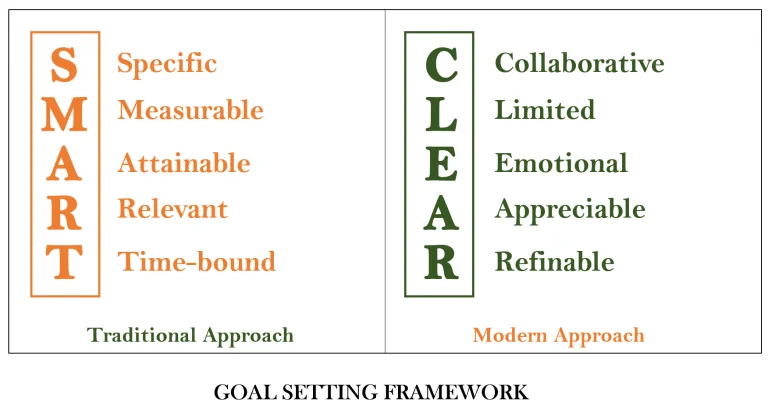
Objectives to consider while setting goals,
Knowing your audience and making them participate in your content is a major indicator to succeed in content marketing. To count your audience in, you need to know everything about them starting from their lifestyle, age group, demographics, their problems, and their needs.
Demographic data necessary to create a content marketing strategy includes,
It is easy to collect this data using Google Analytics. A snake-peek into your subscribers and social media followers will get you a brief idea about these demographics.
Digging deeper into analytics reveals the interests of your website visitors. To find out the interest of your visitors go to your Google Analytics account Audience >> Interest >> Overview
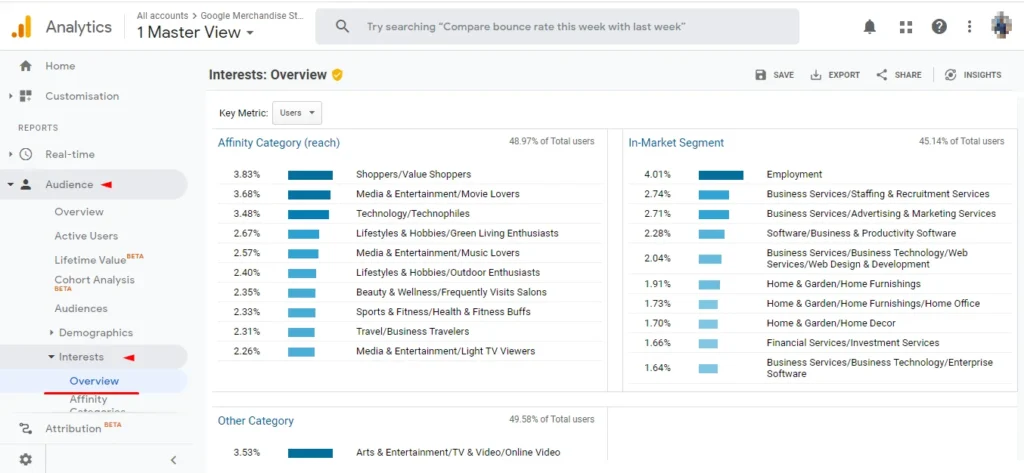
Go to your social media analytics for similar insights. Visit Facebook page insights to get the demographic details of your Facebook followers and visit Twitter analytics to get similar demographics for your twitter followers.
Customer feedback is another important aspect to get detailed insights into the audience.
Try using surveys or ask them questions to understand
Right data helps in creating a killer content marketing strategy that addresses
Usually, we create a buyer persona for content marketing. However, not everyone reading your content is a buyer. Your audience includes people interacting with your brand for the first time who are beyond making any purchase decision.
Therefore, catering content to attract new customers and indulging them in the buyer’s journey is the first step. Follow up by creating content that demonstrates how your brand will solve their problems differently makes them take the desired action.
Once you know your audience, their problems, solutions they are anticipating, and their expectations, it becomes easier to create content and smoothen their journey from a prospect to a brand advocate.
Content planning is a definitive and crucial step in creating a content marketing strategy.
For better understanding, we will divide content planning into three subtopics.
Topic 1 – Content Types
Deciding the type of content required for content marketing is very much necessary because there are some content types that every content marketing plan must include.
One of the major principles of content marketing is to create content for publishing on the website. This is the core content and then repurposing the same content to be published on other third-party websites.
Thus, blog posts are the central part of each content marketing strategy. When blogs are strong, actionable, informative, engaging, and shareable, it automatically delivers results.
Apart from blog posts, prioritize video marketing. Videos make clear cut points. It engages audiences, enhances visit time, and decreases the bounce rate. In addition to that, videos connect with audiences emotionally and informatively.
Adding infographics in your content types enhances the content marketing plan as they are visually appealing, informative, crisp, and straightforward. Use free tools like Piktochart or Canva to create infographics.
Posting them on social media enhances engagement and overall reach.
Webinars, podcasts, worksheets, white papers, eBooks, checklists are some of the other content types that must be considered and added in the content marketing strategy.
Topic 2 – Content channels
The entire process of knowing your audiences, their interests, and where they hang out most gives you a clear understanding of what content channels are suitable for you.
The best way to understand the right content channels is through Google Analytics. Go to Acquisition >> Social >> Overview
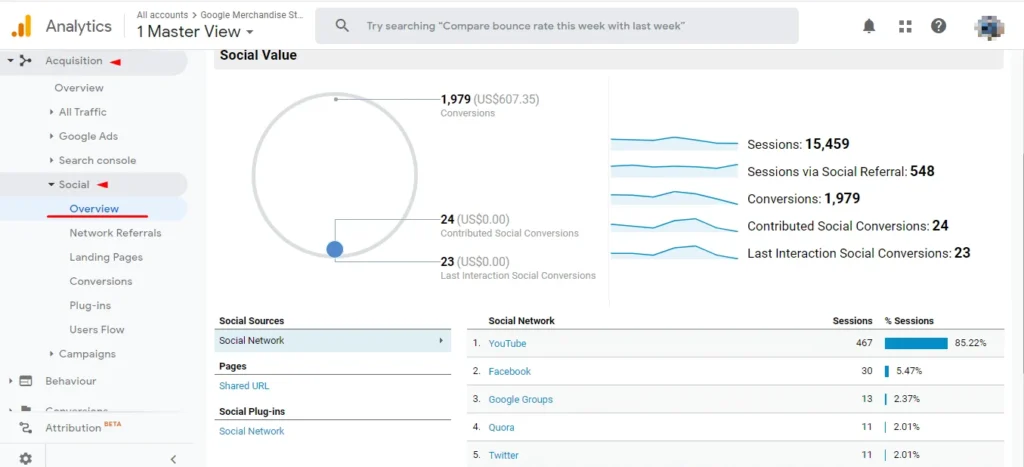
Analytic data shows the prime channels where your content is shared.
Use paid or free tools to analyze your content sharing pattern. Analyze
Topic 3 – Resource allocation
Having understood the content types and content channels to engage the audience, it is time to ensure everything you need to create and deliver through your content marketing strategy is in proper order.
Now, half the content marketing plan, but to proceed further you need to answer a few questions.
If you have an in-house team of content developers, video editors, graphic designers, etc. It becomes easier to allocate resources and monitor their progress.
One of the best ways to track the progress of your content marketing plan is to create a content calendar and share it across the team. Else, you can use ready-made tools like Trello, Asana, etc.
Apart from your content marketing strategy, you need to develop a proper content development strategy that will help you create high-quality content.
Pick a topic from the content calendar and start working on it.
Start researching your content. While researching, give importance to the ranking blogs, what they have, and how you plan to make your content unique.
Work on keywords, research for primary, secondary, and tertiary keywords you are planning to use in the content.
Start writing the content. Be aware of your brand guidelines and think about how your content will add value.
Work on readability, add appropriate backlinks and inbound links, follow all SEO guidelines, and optimize the content for better search engine rankings.
The step is to publish the content. It is easy to publish the content on your WordPress blog.
The next phase is marketing the content as you want better outcomes.
Since everything is done, it is time to measure your efforts. Tracking the progress of your content helps in analyzing the success of your content marketing strategy. Analyze how your content is meeting with the dictated goals.
Regular monitoring and tracking allow you to revise your content marketing strategy accordingly.
Even content marketing is not exempt from the digital marketing measuring stick. In fact, it may be even more important to measure the effectiveness of your content than various other types of online marketing.
So how do you know when you are hitting your goals? And how do you set appropriate benchmarks for your content efforts?
Strong content marketing involves a great deal of strategy and data to ensure that your methods are aligned with and supporting the goals of your organization. This can involve a number of things including:
Measuring the engagement and associated ROI for your content campaign as a whole is a critical. In this webinar, with gShift CEO, Krista LaRiviere, you will learn how to track and optimize your current content strategy to achieve the optimal results.
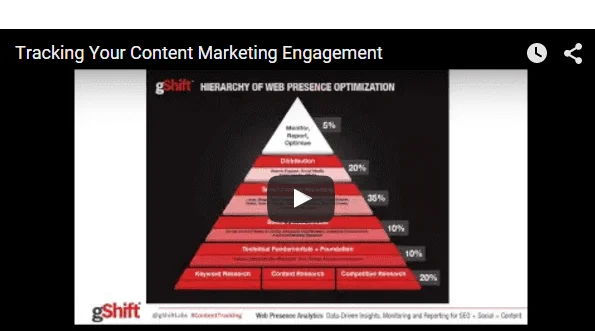
To get your content marketing engine started you need to create a killer content marketing strategy. A content marketing strategy is not just “nice to have” but it’s “must to have”. It is a profound requirement to succeed in your content marketing efforts. Follow and learn from the steps mentioned above to create a killer content marketing strategy and achieve business growth.
Don’t forget to share the post!

Book A Quick 15 Minute Call,
And We’ll Show You How To Unlock The Power Of Every Conversation.



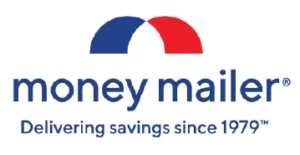



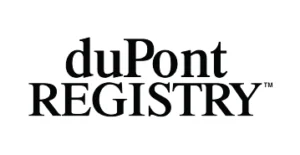
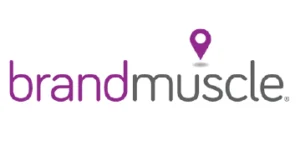
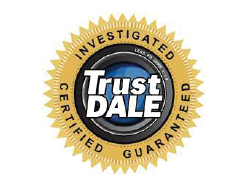


















©2024 All rights reserved – Convirza